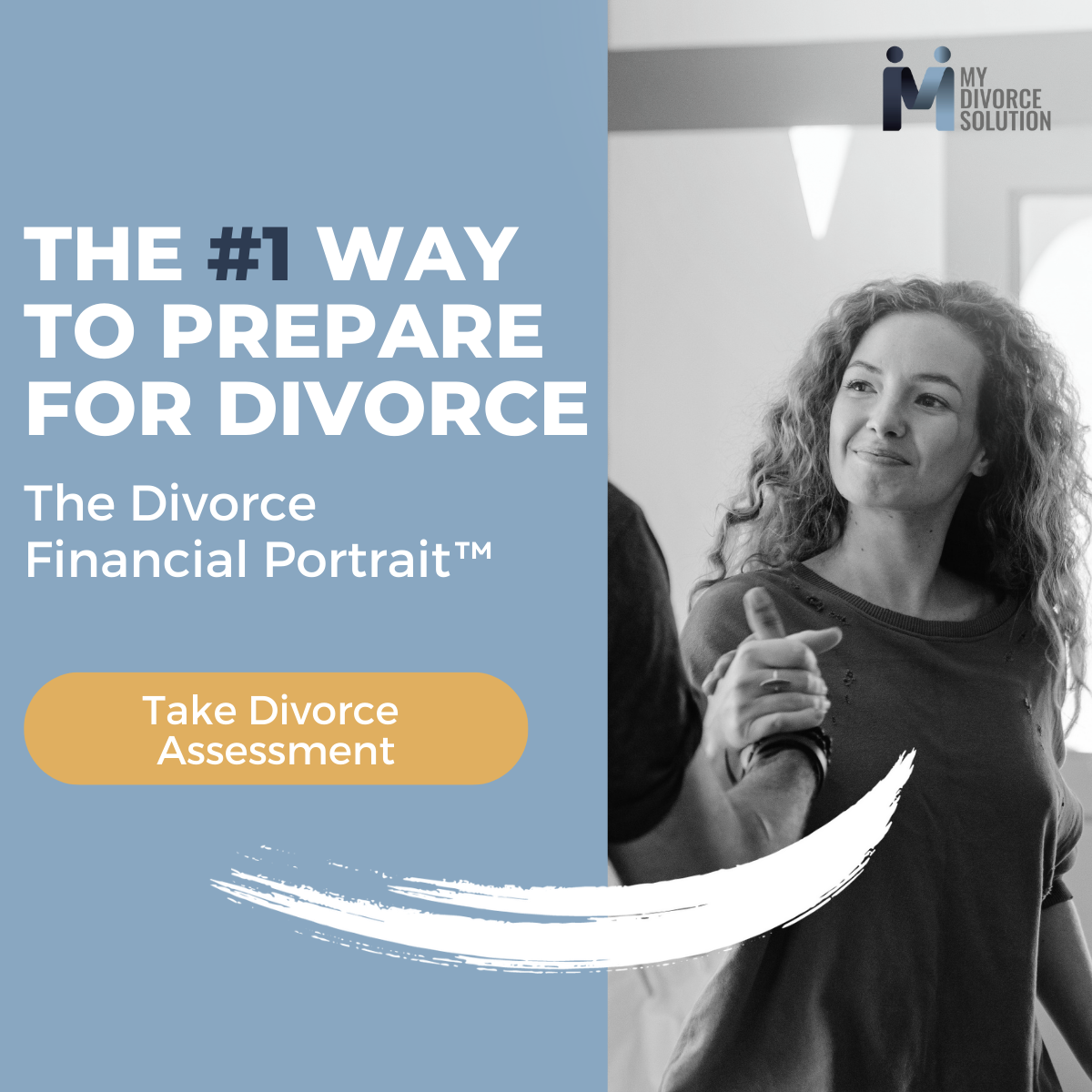
For many, when approaching the new year, new beginnings are considered. Maybe for you that means moving forward with divorce. The first question you may have is “Where do I start?” How do I have clarity and deal with the anxiety of this very critical and emotional decision? I know how you feel because I, too, had to make that decision as a single Mom with two kids depending on me to make really good long-term decisions.
The questions continue. What do I do first? Who do I talk to? What are the steps I need to take? How can I not be another statistic of the family court system? It really does matter where you start!
Fast forward to today where I and my business partner work with numerous clients faced with divorce. The longer a couple is married, the more concerned they are about the future. Usually, during their longer term marriage, financial decisions were not made alone – especially big ones. And when facing divorce, not only are they making decisions solo, but they are oftentimes responsible for children. In addition to feeling overwhelmed, they also feel guilty and worry their kids are going to get cheated out of a happy life.
That is why I come to you with this topic in the new year. Assuming divorce is inevitable, the sooner you start the process and determine where you stand and what your options are, the sooner you can start planning for your future. And the good news is, you don’t have to do it alone!
Finding the Right Team to Guide You Through Divorce
The first step is to invest in the development of a comprehensive financial portrait, complete with key and supporting documents, scenarios of division of marital assets, and estimated support payments. This financial portrait is a neutral document that also considers both spouses’ individual long-term goals and objectives when determining an equitable settlement. Search the internet for a Certified Divorce Financial Analyst (CDFA), preferably one who has no stake in investing your money now or ever but is solely interested in helping you know your options. Even if you do not have much in the way of investable assets, a holistic advisor can help you put your financial goals into perspective.
It is easy to let emotions rule when attempting to maintain your current lifestyle when divorcing. Often “for the sake of the children,” you try to keep the house, pay tuition, purchase vehicles – which was easier with two incomes. Most attorneys do not, and frankly do not have the ability to give advice on the long-term financial impact of divorce. They studied law, not finances. Their expertise is to get you divorced legally and to make sure any Order is enforceable.
A CDFA, on the other hand, can demonstrate how making lifestyle changes early in divorce can ensure that you can proceed post-divorce with clarity, confidence and financial independence. A CDFA can help you develop a financial plan that will prevent the risk of you being a financial burden on your kids later in life. They will help you determine what your budget and retirement savings plan should look like, and if you can afford to keep the house or if you need to downsize. A good CDFA will help you understand cash flow, tax consequences and how you balance income, savings and retirement monies. A good CDFA will think forward for you and help you develop your new independent life.

Next Step: How Will Your Divorce Be Settled?
The next step is to determine which type of settlement proceedings best fit your situation. This will primarily depend on the amicability and financial complexities of your circumstances. Most families do not require high-powered attorneys and long, expensive court battles. Assuming you have taken that first critical step of assembling your financial portrait, you and your spouse can agree to keep things simple and your divorce can be accomplished with much more clarity, less stress and for much less money.
The mediation process is typically the least costly. While the mediator cannot give advice, he/she can utilize the financial portrait as the foundation for the financial discussions. The mediator’s role is to help both parties communicate and decide on essential issues. Once an agreement is reached, the mediator draws up a Memorandum of Understanding. Typically, with mediation, each party is advised to obtain an attorney to review the agreement on their behalf. One of the reviewing attorneys will draw up the divorce agreement and the other spouse’s attorney, if chosen, will review the agreement. If no changes are needed, both parties sign and the papers are filed with the Court. If you feel mediation is not working for you, you may leave at any time and re-start your divorce using another process.
The collaborative divorce process is a method of divorce where both parties agree not to litigate. All professionals involved in a collaborative divorce are specially trained and work together for the best interests of the family. Each party is represented by an attorney; a financial neutral and divorce coach are also involved. If needed, child psychologists are invited to join the sessions. The fees for all of these professionals do add up; the challenge is to work effectively and efficiently together towards the best possible outcome for the situation.
The hallmark of collaborative divorce is the agreement that everyone signs in the beginning. This document states that if, for any reason, either party decides to litigate in court, all of the collaborative professionals must withdraw, and the parties must start the divorce process all over again with new lawyers and new advisory professionals. This agreement keeps everyone moving toward the same goal: to resolve your case amicably, outside of court, in a way that meets your needs and those of your spouse and your children.
If you feel your case involves more complexities, such as valuing a business, or you and spouse cannot agree on how to approach things, then you may want to turn to arbitrators and private judges. With this approach, each side presents their case with their respective attorney and the arbitrator makes the final decision. Again, utilizing your financial portrait as the roadmap is critical in any divorce process. Although private arbitrators and judges aren’t cheap, they are almost always less expensive than going to trial.
The Role of a CDFA in Your Divorce
Mediators, attorneys and arbitrators know the standard procedure for divorce proceedings, but typically don’t consider, nor do they have the training and experience required to address your individual long-term goals and objectives when determining an equitable settlement. Seeking the advice of a CDFA before finalizing a divorce can be the difference between a lifetime of stress and trying to make ends meet or a sound financial plan that can carry you beyond divorce!


Karen Chellew is a legal liaison at My Divorce Solution who partners with Catherine Shanahan, CDFA. My Divorce Solution is committed to helping divorcing couples develop a transparent plan via a three-phase process to optimize the outcome of their divorce. Phase 1 is the development of the financial portrait.
www.mydivorcesolution.com
215-486-8347 | 843-929-0399




